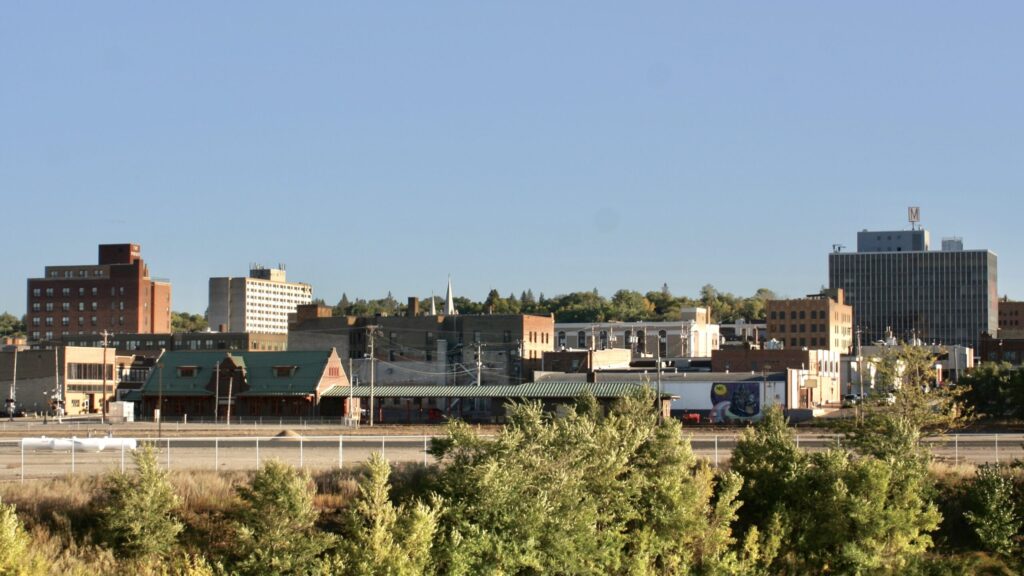North Dakota’s ambulance providers battle the nation’s most extreme transport distances averaging 87 miles while collecting just 34% of billed charges, as services struggle with volunteer staffing shortages and oil field population volatility that creates unpredictable payer mix fluctuations exceeding 40% seasonally.
Payer Mix Reality
North Dakota’s payer landscape reflects unique demographic and economic factors impacting revenue predictability. Current mix shows Medicare at 36%, Medicaid at 20%, commercial insurance at 32%, and self-pay at 12%. However, oil field regions experience dramatic swings with commercial insurance reaching 48% during boom periods. Blue Cross Blue Shield of North Dakota maintains 52% market share, followed by Sanford Health Plan at 24% and Medica at 11%. Reimbursement challenges persist: Medicare pays approximately $445 for BLS transports plus mileage, while North Dakota Medicaid reimburses $205, among the lowest nationally. Commercial rates average $875 but face increasing denials for long-distance transports. Collection rates tell a concerning story at 34% overall, with frontier counties collecting only 27%. The Bakken region’s transient workforce creates address verification nightmares with 31% returned statements. Self-pay collections in oil counties drop to 14% during bust cycles. Rural services report 120-day A/R exceeding 60% of total receivables, indicating severe cash flow constraints threatening operational viability across the state’s volunteer-dependent system.
State Medicaid & Compliance
North Dakota Medicaid presents unique challenges for ambulance providers managing extreme distances and limited resources. Current rates remain inadequate: $205 for BLS, $380 for ALS, with critical mileage reimbursement at $9 per loaded mile – essential given 87-mile average transports. The state enforces 365-day timely filing with full payment requiring 180-day submission. Prior authorization for non-emergency transports requires form SFN-1902 submitted 48 hours before service. North Dakota’s No Surprises Act implementation includes specific provisions for frontier ambulance services, recognizing limited network adequacy. The Department of Human Services updated requirements in 2024, mandating GPS-verified mileage documentation and expanded medical necessity criteria acknowledging facility distances. Documentation must include weather conditions affecting transport decisions, nearest appropriate facility calculations, and volunteer availability impacts. Electronic submission through MMIS is required for all providers. Unique provisions allow emergency designation for weather-delayed transports typically considered non-emergent.
Schedule a demo today—24-hour turnaround to maximize North Dakota Medicaid reimbursement despite challenging operational realities.
Collection Laws
North Dakota’s collection framework balances frontier realities with consumer protections in a boom-bust economy. The state follows federal FDCPA while adding provisions: collectors must register with the Department of Financial Institutions, cannot contact debtors during documented oil field shifts, and observe 8 AM – 9 PM Central Time restrictions. Senate Bill 2229 (2023) addressed medical debt specifically – prohibiting wage garnishment below 40 times minimum wage weekly, capping garnishment at 20% of disposable income, and exempting unemployment benefits. The statute of limitations stands at six years for written contracts. New legislation requires 120-day delays before credit reporting and mandates consideration of economic hardship from oil field layoffs. Providers must offer 18-month payment plans for balances exceeding $500. Collection agencies require $15,000 bonds and biennial audits. Violations trigger $1,500 penalties plus damages. Unique provisions protect agricultural workers during harvest seasons and oil field workers during documented industry downturns from aggressive collection activities.
Local EMS Landscape
North Dakota’s EMS system depends heavily on volunteers covering vast territories with limited resources. Major healthcare includes Sanford Health (Bismarck/Fargo), Altru Health (Grand Forks), and Trinity Health (Minot). The state’s 130 licensed ambulance services comprise 85% volunteer operations struggling with recruitment. Urban areas like Fargo operate professional services while rural counties depend entirely on volunteers responding from home. Average transport distances reach 87 miles statewide, with western counties exceeding 120 miles to definitive care. The oil field impact creates unique challenges – McKenzie County saw call volume increase 400% during the Bakken boom. Many services receive county mill levy support averaging $450,000 annually. Mutual aid agreements span enormous distances with backup sometimes 100+ miles away. Critical staffing shortages forced 12 services to surrender licenses since 2020. Contract peculiarities include oil company retainers for industrial coverage.
Schedule a demo today—24-hour turnaround to optimize billing across North Dakota’s volunteer-dependent rural EMS landscape.
Case Study
In Williston, Trinity Health Ambulance confronted oil boom volatility that saw monthly call volumes swing from 180 to 450 while payer mix shifted dramatically with workforce changes. The service, covering 5,000 square miles of northwestern North Dakota, collected only $1.8 million on $5.3 million in charges – a 34% collection rate. They implemented dynamic staffing models with flexible billing workflows accommodating payer mix changes. By partnering with oil field employers for insurance verification and establishing man camp outreach programs, they improved data capture accuracy from 61% to 84%. Investment in satellite-based GPS documentation satisfied mileage requirements for their 95-mile average transports. Automated insurance discovery tools identified coverage for transient workers, reducing self-pay classification by 43%. Within 16 months, collections increased to $2.9 million despite unchanged rates. The improved revenue supported recruitment bonuses critical for maintaining staffing during workforce competition with oil field wages.
North Dakota’s extreme geography and economic volatility demand specialized EMS billing expertise. Midwest Service Bureau’s proven healthcare solutions address unique challenges facing Peace Garden State providers managing nation-leading transport distances. North Dakota EMS billing recovery requires understanding frontier dynamics and boom-bust economics that standard billing services cannot accommodate. Maintaining North Dakota ambulance debt compliance while pursuing collections means respecting economic hardships during industry downturns affecting entire communities. Our North Dakota emergency medical transport collections strategies maximize recovery during boom periods while maintaining community relations during busts. As North Dakota surprise billing ambulance regulations acknowledge frontier realities, specialized expertise ensures compliance while optimizing appropriate reimbursement.
The North Dakota Department of Health’s 2023 EMS Report revealed average collection rates of 34% statewide, with oil field counties experiencing 40% swings based on industry cycles. Professional revenue cycle management can stabilize revenue despite economic volatility.
Schedule a demo today—24-hour turnaround to enhance billing performance across market cycles.
Midwest Service Bureau’s compliance guarantee ensures collections meet North Dakota requirements while maximizing revenue during all economic conditions. Contact us at 316-263-1051 to address your North Dakota EMS revenue challenges.




